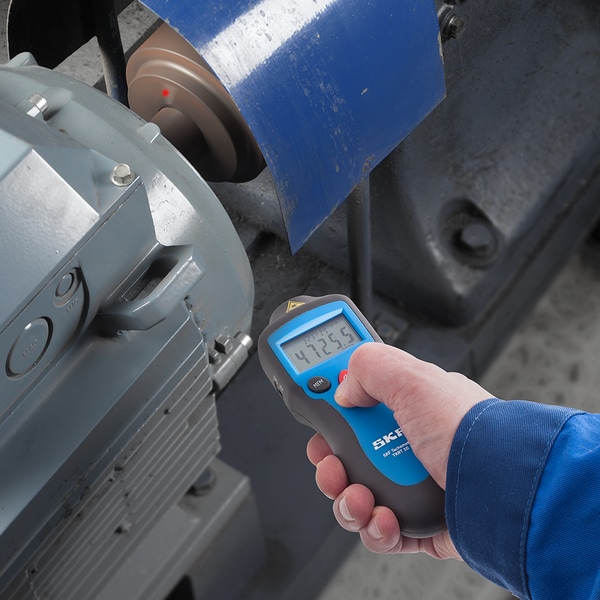Improve Your Driving Experience with a Trusted Tachometer
Improve Your Driving Experience with a Trusted Tachometer
Blog Article
Opening the Keys of Tachometers: Every Little Thing You Required to Learn About This Crucial Instrument in Your Automobile
Comprehending the ins and outs of tachometers can offer important insights into your vehicle's performance and maintenance needs. From gauging engine rate to decoding the information it provides, tachometers serve as an essential device for lorry proprietors and enthusiasts alike. By untangling the enigmas behind this necessary instrument, you can open a wide range of info that can enhance your driving experience and make sure the durability of your vehicle.
Relevance of Tachometers
The relevance of tachometers depends on their capacity to offer essential real-time data about an engine's rotational speed, allowing for exact tracking and upkeep of equipment. By determining the transformations per min (RPM) of an engine's crankshaft, tachometers provide beneficial understandings right into the engine's performance - tachometer. This information is vital for guaranteeing that the engine operates within its optimal variety, avoiding prospective damages from over-revving or underperforming
Tachometers play an important duty in helping drivers and technicians find any anomalies in the engine's rate, which could suggest concerns such as fuel ineffectiveness, mechanical troubles, or excessive stress on the engine. By without delay identifying these problems via tachometer analyses, upkeep can be performed proactively, avoiding pricey repairs and downtime over time.
Moreover, tachometers are particularly vital in high-performance vehicles and machinery, where accurate control over engine speed is needed for optimum procedure. Racing automobiles, aircraft, and commercial devices count on tachometers to supply peak efficiency while maintaining safety standards. Basically, tachometers are not just instruments for determining rate yet crucial devices for ensuring the smooth and efficient operation of engines throughout various applications.
How Tachometers Measure Engine Speed
Utilizing sensing units that identify the regularity of electrical pulses produced by the engine's ignition system, tachometers accurately measure the rotational rate of an engine. By checking the price at which these pulses are gotten, tachometers provide real-time responses on just how quick the engine's crankshaft is turning per minute, generally described as revolutions per min (RPM)
The tachometer's sensing unit, typically connected to the engine's ignition coil or ignition system cables, gets the electric signals created each time a cyndrical tube fires. These signals are after that exchanged RPM readings presented on the gauge or tool cluster within the vehicle driver's view. Tachometers can be analog or electronic, with contemporary vehicles frequently featuring digital display screens for exact and instantaneous RPM readings.
This details is important for vehicle drivers to comprehend the engine's efficiency, prevent over-revving, enhance equipment shifting, and make sure reliable fuel intake. By accurately determining engine rate, tachometers play a vital function in aiding drivers operate their automobiles securely and efficiently.
Translating Tachometer Readings
Having a clear understanding more tips here of exactly how tachometers gauge engine rate sets the foundation for successfully analyzing the RPM readings displayed. Translating tachometer analyses is crucial for optimal automobile performance and engine health and wellness. RPM (Transformations Per Min) readings on the tachometer indicate the rate at which the engine's crankshaft is revolving. When the engine is idling, the tachometer needle generally rests around 600-1000 RPM, depending upon the lorry. As you increase, the RPM will enhance, showing the engine's greater rotational rate. When changing equipments in a hand-operated transmission vehicle, the RPM will go down as you involve the clutch and adjustment gears, then increase once again as you speed up in the new gear. Keeping track of the tachometer can assist you figure out one of the most effective moving points to maximize gas economic situation and engine power. In addition, uncommon variations or continually high find out RPM analyses might suggest prospective problems with the engine that might call for specialist attention. By taking notice of the tachometer analyses and recognizing how to translate them, you can ensure your automobile runs efficiently and effectively.


Tips for Utilizing Tachometers Effectively
To boost driving effectiveness and maximize engine efficiency, what secret strategies can be carried out for effectively making use of tachometers? Tachometers are essential devices that offer real-time responses on engine speed, allowing drivers to make educated choices for much better efficiency - tachometer. Here are some suggestions for making use of tachometers efficiently:
Recognizing Optimal RPM Range: Familiarize yourself with the optimal RPM (Transformations Per Min) array for your vehicle. Keeping the engine within this range can enhance fuel effectiveness and lengthen the engine's life-span.
Changing Equipments at the Right Time: Utilize the tachometer to identify the best time to move equipments. Aim to shift gears when the RPM gets to the optimum array for the following equipment.
Checking Engine Stress And Anxiety: High RPMs for long term durations can stress the engine. Watch on the tachometer to avoid over-revving, particularly during acceleration or when carrying hefty lots.
Tachometers and Automobile Maintenance
When thinking about car maintenance, tachometers play an essential duty in keeping an eye on engine performance and discovering potential issues. Tachometers give crucial information on engine speed, permitting vehicle drivers and auto mechanics to guarantee that the engine is operating within the advised RPM variety. Frequently monitoring the tachometer readings can aid determine problems such as engine misfires, damaged ignition system, or concerns with the gas delivery system. By focusing on the tachometer, motorists can prevent too much stress on the engine, which can bring about expensive repairs down the line.
Along with spotting prospective concerns, tachometers can likewise assist in optimizing fuel performance. By keeping the engine speed within the optimum array, chauffeurs can boost their gas mileage and reduce fuel usage. This not just profits the chauffeur's pocketbook but also adds to ecological conservation by lowering dangerous emissions.
Final Thought

Report this page